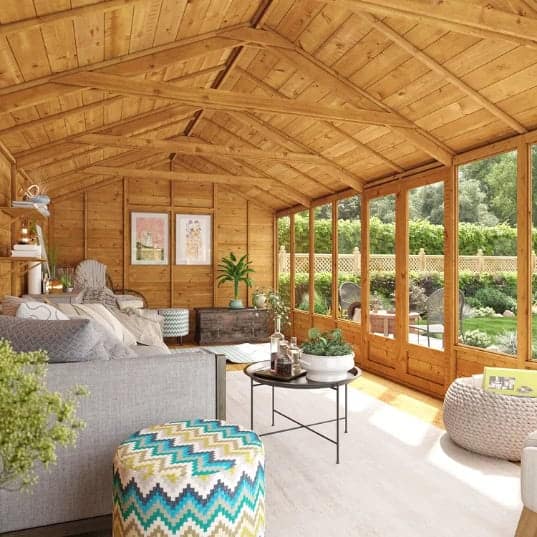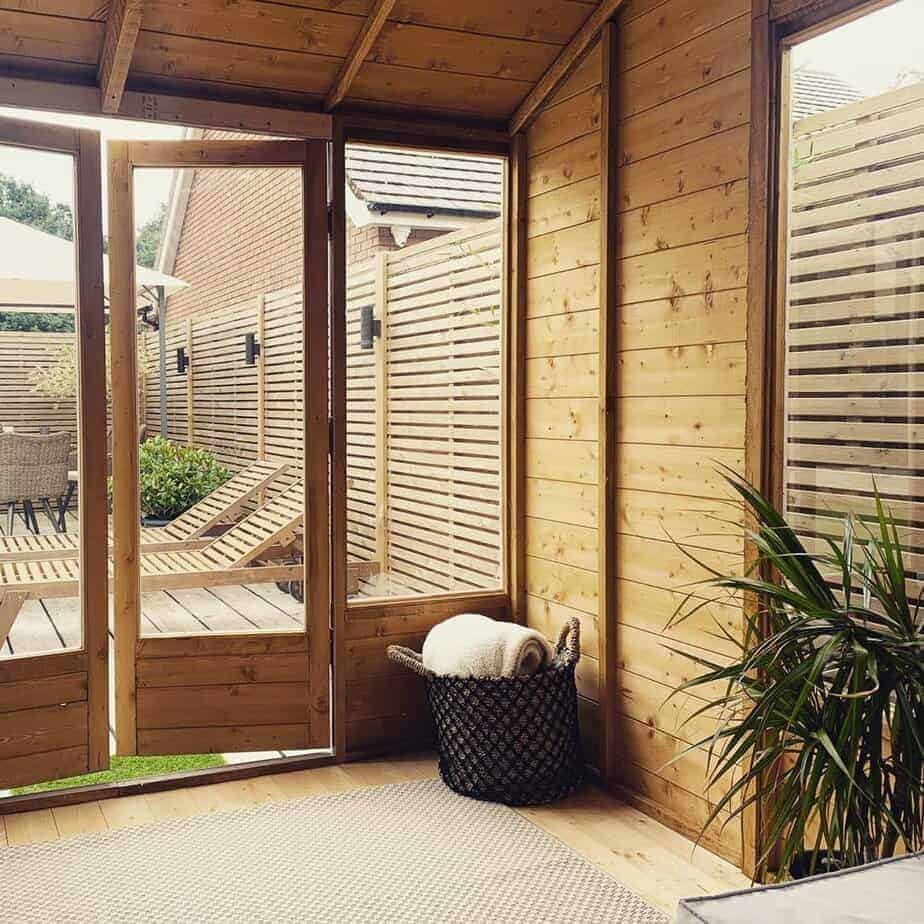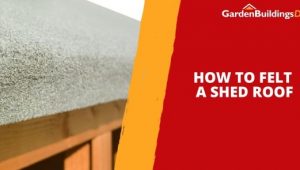Jump to:
Outside noise shouldn’t stop you from making the most of your summer house. Soundproofing is one way to address this concern, especially if it’s used as a garden music room.
If you’re just starting out, check out our full range of summer houses, all of which can be made even better with soundproofing. Whether it’s a garden music room or a peaceful retreat, the right structure is a great place to begin.
This guide will walk you through the materials and techniques. Consider this a starting point and adjust it to your needs. Ready?
Start with Choosing Your Soundproofing Materials
You can soundproof your summer house yourself, as long as you have the time and the right materials. Off-the-shelf options are great and can be quite affordable, such as:
Plywood
Plywood is made from layers of softwood veneer glued together. Its cross-grain structure gives it strength, and its stiffness helps with blocking sound. It’s incredibly versatile and can be used on the walls, ceilings, and floors.
Note: You can use plywood alone as soundproofing material, but it’s not highly effective on its own. It’s most effective when used in conjunction with insulation and other techniques.
Rockwool Slabs (Mineral Wool Insulation)
Rockwool slabs, also known as mineral wool insulation, are an excellent choice for soundproofing a summer house. Made from spun stone fibres, they are dense and highly effective at both absorbing sound and adding mass to block noise transmission.
You can fit Rockwool slabs into the wall cavities — the gaps between the wooden frame of your summer house. This helps reduce both airborne sound (like voices or music) and impact noise.
To install them, you may need to remove any internal wall panels or cladding first, depending on the construction. Similarly, if you plan to soundproof the floor, lifting the floorboards gives you access to fit slabs underneath.
Tip: When installing Rockwool, wearing protective gloves and a dust mask is advisable, as the fibres can irritate the skin and lungs during handling.
Acoustic isolation membrane
An acoustic isolation membrane is a sheet made from rubber, foam, or felt-like material. You place it between materials like plywood to help block sound. Even at just 3mm thick, this material can soundproof your summer house.
Once the wall is built, e.g., completed with cladding or drywall, it stays hidden inside.
OSB and plasterboard
OSB (Oriented Strand Board) are wood strands glued together in layers. Its high density and mass add to its blocking and absorbing sound waves properties. It’s strong but not as smooth or refined, which cues for plasterboards.
Plasterboard is a layer of gypsum plaster sandwiched between two layers of paper. It’s good for creating a smooth finish and can also help absorb some sound. When paired with OSB, it helps reduce sound transmission further.
Screws, adhesives, caulk, and sealants
These materials are essential for soundproofing your summer house. You’ll use them to secure your chosen soundproofing materials.
Screws for fastening plywood or drywall to the frame. Adhesives for sticking soundproofing materials to surfaces; as an alternative to screws.
Caulk for sealing gaps or cracks in walls, windows, or around doors to prevent sound leaks. Sealants for filling larger openings and creating a tight seal to stop sound from getting in or out.
Find a product or brand for each that you think will get the job done for your soundproofing needs.
Soundproof Summer House Walls
The walls are the most important part or area of the garden room when it comes to soundproofing. If yours has a wooden frame, choose one of the options above to improve acoustic mitigation.
For instance, start by fitting insulation inside the wall cavities, a.k.a. the gaps between the wooden frame. Mineral wool or acoustic slabs will do, then layer them with plywood or OSB. Smooth the surface with plasterboards, that way you can paint it or apply wallpaper.
Finish by sealing all joints, edges, and gaps using caulk or acoustic sealant. This helps ensure no sound escapes or enters, even through the smallest openings. These include the windows, doors, ceiling, and any holes that might be present in the structure.
Follow the manufacturer’s guidelines during application or installation when needed.
Don’t Forget the Floors
A common misconception is that the walls are enough to soundproof a space. In reality, the floor is just as important, as sound can travel underneath. Vibrations can also pass through anything connected to the floor. This, in turn, casuses flanking noise through the surrounding walls.
What you can do is make sure the existing floor structure and subfloor (e.g. the base) is in good shape. If it needs strengthening or you want better soundproofing, add a plywood or OSB on top. After that, install an acoustic insulation membrane over the surface. This adds another layer of sound protection before laying your final floor finish.
Tip: If you’re on a tight budget, you could use old carpet underlay or thick fabric. The thicker it is, the better it will be at reducing noise.
Or Skip Soundproofing with a BillyOh Summer House
Summer houses are enclosed structure built from wood, a natural sound-dampening material. To improve noise-blocking, manufacturers use specialised boards in their construction.

Take our BillyOh Petra Tongue and Groove Reverse Apex Summerhouse, for insance. Its interlocking T&G boards reduce noise by limiting gaps where sound can pass through.
Thicker cladding works even better. The same applies to our log cabin summer houses, which come in 19mm, 28mm, and 44mm thickness.
Have a look at our ‘Year Round Summer House Options’ for more choices.






